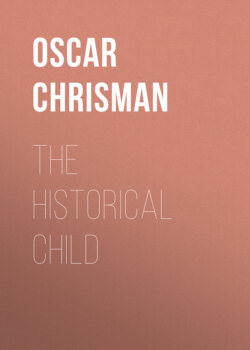Читать книгу The Historical Child - Oscar Chrisman - Страница 60
На сайте Литреса книга снята с продажи.
Education.
ОглавлениеTable of Contents
In the very early times in India, royal courts were the seats of learning, and the learned and wise of all nations were welcomed to them. Learned priests were retained in these courts not only to perform the religious duties but also for the purpose of imparting learning. On great occasions men of learning from all parts came to these places and discussions were held on ritualistic matters and likewise on such subjects as the human mind, the destination of the soul after death, the future world, and the like. Then later appeared Brahminic settlements called Parishads, answering to the Universities of Europe. These were at first, perhaps, conducted by three Brahmins who knew the Vedas, but the number was increased up to twenty-one. To these places men of the Brahmin caste who wished to become learned could go and receive instruction in the Vedas and such traditionary law and astronomy and philosophy as was current. Besides these Parishads, there were private schools, established by individual teachers, who collected about them a body of students. Also learned Brahmins in their old age would sometimes retire to forests and gather students around them. Later great schools arose, such as noted by Houen Tsang, a Chinese traveler, who spent several years in India in the seventh century after Christ. "Our traveler now came to the great NÂLANDA University, if we may call it by that name. The monks of this place, to the number of several thousands, were men of the highest ability, talent, and distinction. 'The countries of India respect them and follow them. The day is not sufficient for asking and answering profound questions. From morning till night they engage in discussion; the old and the young mutually help one another. Those who cannot discuss questions out of the Tripitaka are little esteemed, and are obliged to hide themselves for shame. Learned men from different cities, on this account, who desire to acquire quickly a renown in discussion, come here in multitudes to settle their doubts, and then the streams (of their wisdom) spread far and wide. For this reason some persons usurp the name (of Nâlanda students) and in going to and fro receive honor in consequence.'"67
The Brahmins themselves received the highest education possible. This consisted in the memorizing of their sacred books and a study of the philosophy and science of their times. The second and third castes seem to have been accorded the right to study what the first caste did, yet the third caste must not have entered much into this but have received a somewhat meager education. As boys followed the occupation of their parents, they would receive such elementary instruction as was needed in the trade or work to be performed. The fourth caste had no need for learning so they received none except in the duties which a servant was expected to perform.
In the olden times, when women were well respected and permitted to appear in public, girls were taught to read and to write and were given other education. But later they received no education further than the training for domestic duties. Education was not needed by women, as a woman must at all times depend upon some man for her knowledge of things. The dancing girls received some education, as it was considered that their religious duties would be better performed if they should receive some intellectual training.
The student was expected to be obedient and respectful to his teacher and to serve him in every way. The discipline of the school was very mild. Laurie quotes from Manu: "Good instruction must be given to pupils without unpleasant sensations, and the teacher who reverences virtue must use sweet and gentle words. If a scholar is guilty of a fault, his instructor may punish him with severe words, and threaten that on the next offence he will give him blows; and, if the fault is committed in cold weather, the teacher may dowse him with cold water."68
"To the Hindus we are indebted for our numerical notation, often wrongly attributed to the Arabs. During the fifth century after Christ they invented an algebra superior to that of the Greeks, although they were probably assisted by the work of the latter. They early learned how to calculate eclipses and find the location of planets by means of tables. They seem also to have had some knowledge of medicine. By 300 A. D. they possessed a treatise on rhetoric, and had worked out a logic two centuries before the time of Aristotle; while in the science of grammar, as early as the fourth century B. C., they were so far advanced that the Western world first learned what philology was when the study of Sanskrit was opened to Europe a hundred or more years ago."69
